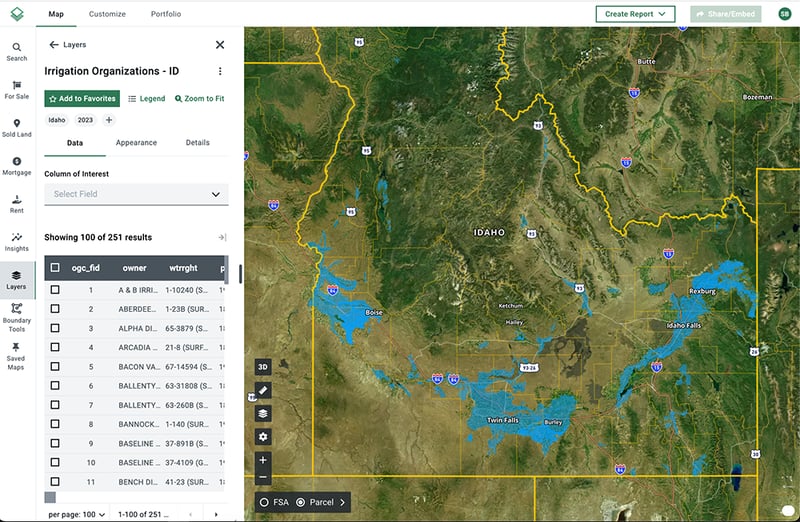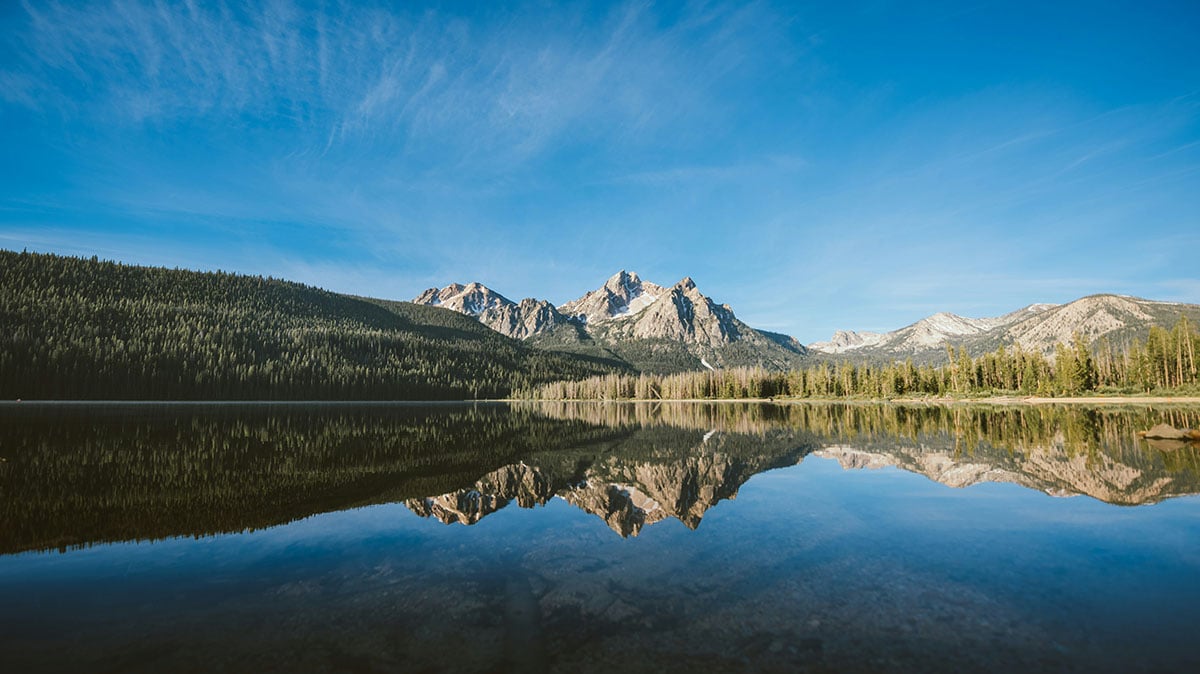Idaho is renowned for its agriculture, producing staples like potatoes, sugar beets, barley, and alfalfa hay. However, maintaining its fertile croplands in a semi-arid climate depends heavily on irrigation supplied by both surface water and groundwater.
To sustain this vital industry, irrigation organizations across Idaho play a critical role in managing water resources efficiently and equitably.
Map of Idaho Irrigation Organizations
Acres' interactive Irrigation Organizations Map for Idaho offers a comprehensive overview of the state's water resources. It highlights irrigation districts, canal companies, lateral ditch associations, and other entities responsible for managing and delivering water for agriculture.

Acres’ Idaho irrigation organization data is derived from the Idaho Department of Water Resources.
Role of Irrigation Organizations
Irrigation organizations are the backbone of Idaho’s water management system, ensuring that the state’s agricultural industry thrives despite water supply complexities.
Idaho’s irrigation organizations primarily:
- Develop and maintain irrigation infrastructure.
- Enforce water rights to ensure compliance and resolve disputes.
- Manage water storage and allocation to address scarcity and adapt to climate challenges.
- Unite landowners, farmers, and stakeholders to address water management challenges collectively.
Types of Irrigation Organizations
Irrigation Districts
Irrigation Districts are public organizations formed through local elections. An elected board oversees operations and creates by-laws to govern the district.
These districts handle large-scale water delivery systems and play a vital role in Idaho's agriculture.
Key responsibilities include:
- Planning, building, and managing water delivery systems such as canals, reservoirs, and pumping stations.
- Owning and allocating water rights.
- Maintaining infrastructure essential for irrigation.
- Charging landowners fees to fund services.
- By pooling resources and funding, these districts make large-scale irrigation projects possible.
This collective approach helps address water delivery challenges too expensive or complex for individual landowners to tackle alone.
Private Irrigation Companies
Private irrigation companies operate as non-profits managed by elected boards. Members own shares in the company, giving them a stake in the operations. These companies distribute water and maintain infrastructure critical for farming.
Private irrigation companies include:
- Canal Companies: Manage large systems that transport water over long distances using canals and diversion structures.
- Lateral Ditch Associations: Handle smaller-scale infrastructure like minor ditches to deliver water to individual fields.
- Reservoir Companies: Store and release water to ensure a steady supply for irrigation.
Water is distributed annually based on the shares each member owns. Members also pay fees to maintain the canals, ditches, or reservoirs used to deliver water.
Final Thoughts
In Idaho, active irrigation organizations are essential for maintaining the balance between an agriculturally-driven economy and sustainable water management.
These organizations play a crucial role in:
- Ensuring efficient water distribution.
- Fostering conservation of water resources.
- Supporting the state's agricultural economy.
With Acres’ Idaho Irrigation Organizations Map, land professionals gain the insight needed to make informed decisions and safeguard Idaho’s agricultural legacy.
